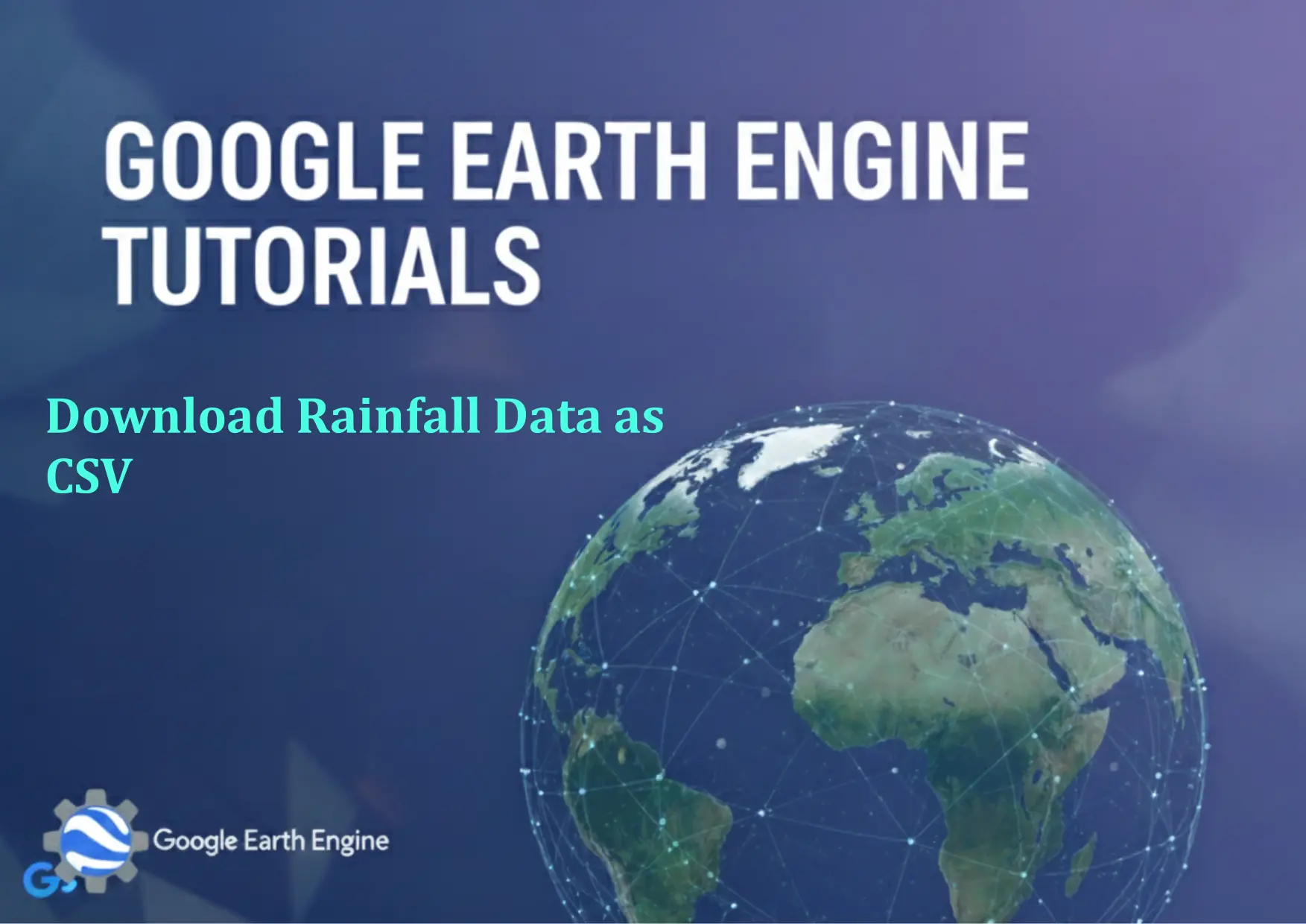Google Earth Engine Tutorial: Download Rainfall Data as CSV
Credit: Youtube Channel “Terra Spatial, Guide on generating random sample points and downloading rainfall data in CSV format for analysis.”
You can see all the tutorials from here: Techgeo Academy.
Introduction
Google Earth Engine (GEE) is a powerful platform for planetary-scale geospatial analysis, and it allows users to access and process global datasets, including rainfall data. This tutorial will guide you on how to download rainfall data as a CSV file using GEE.
Prerequisites
To follow this guide, ensure you have:
- A Google Earth Engine account (sign up at https://earthengine.google.com)
- Access to the GEE Code Editor
- Basic knowledge of JavaScript and the GEE API
Step 1: Open Google Earth Engine Code Editor
Launch the Google Earth Engine Code Editor and authenticate your account if prompted. This will allow access to the platform’s datasets and tools.
Step 2: Import Suitable Rainfall Dataset
Use a precipitation dataset such as ERA5 (European Centre for Medium-Range Weather Forecasts) or CHIRPS (Climate Hazards Group Infra-Red Precipitation with Stations). Example code for ERA5:
var dataset = ee.ImageCollection("ECMWF/ERA5_LAND/DAILY_AGGR");
var rainfall = dataset.select('discharge');
Step 3: Filter the Dataset
Define a date range and region of interest (ROI) for your analysis. Adjust the start and end dates and ROI coordinates as needed:
var roi = ee.Geometry.Rectangle([longitude1, latitude1, longitude2, latitude2]);
var filtered = rainfall.filterDate('2020-01-01', '2021-01-01')
.filterBounds(roi);
Step 4: Convert Data to CSV Format
Create a function to extract and format the data for CSV output. Example:
function toCsv(image) {
return image.reduceRegion({
reducer: ee.Reducer.mean(),
geometry: roi,
scale: 1000,
maxPixels: 1e9
}).toCloudStorage({
description: 'rainfall_csv',
bucket: 'your-bucket-name',
fileNamePrefix: 'rainfall_data',
fileFormat: 'CSV'
});
}
Step 5: Export and Download
Call the function and check the output in the cloud storage. Use the following code to trigger the export:
filtered.evaluate(toCsv);
After exporting, download the CSV file from your cloud storage (e.g., Google Cloud Storage or your Drive).
FAQ
Q: Can I use a different rainfall dataset?
A: Yes, replace ‘ECMWF/ERA5_LAND/DAILY_AGGR’ with another dataset ID, such as ‘CHIRPS/2.0/daily’ for CHIRPS data.
Q: What if the dataset is too large to process?
A: Use reset() or mosaic() to reduce the dataset size and optimize performance.
Q: How do I handle different CSV file formats?
A: Adjust the function to define headers, delimiter, or include additional parameters like format or columns.
Q: Does GEE support exporting to local machines directly?
A: No, GEE exports must be saved in cloud storage first (Google Drive, Cloud Storage, etc.) and then downloaded manually.
Q: How accurate is rainfall data from these sources?
A: Accuracy depends on the dataset. Era5 is based on models, while CHIRPS combines satellite and station data for higher precision in regions with ground measurements.






